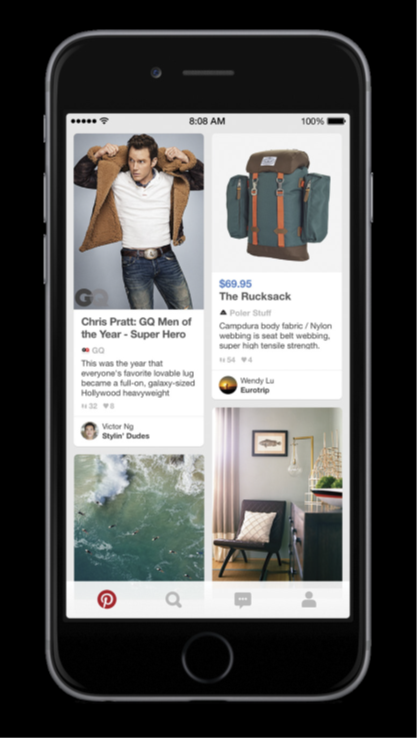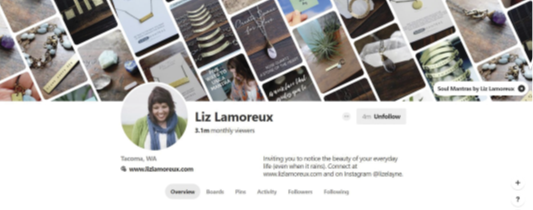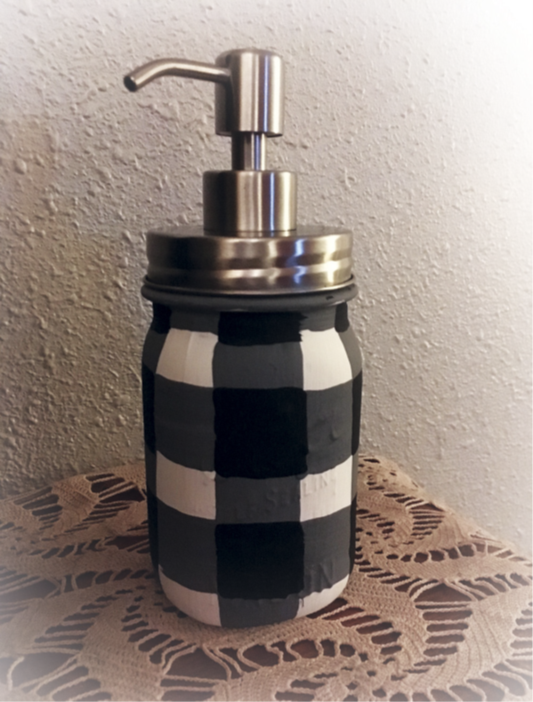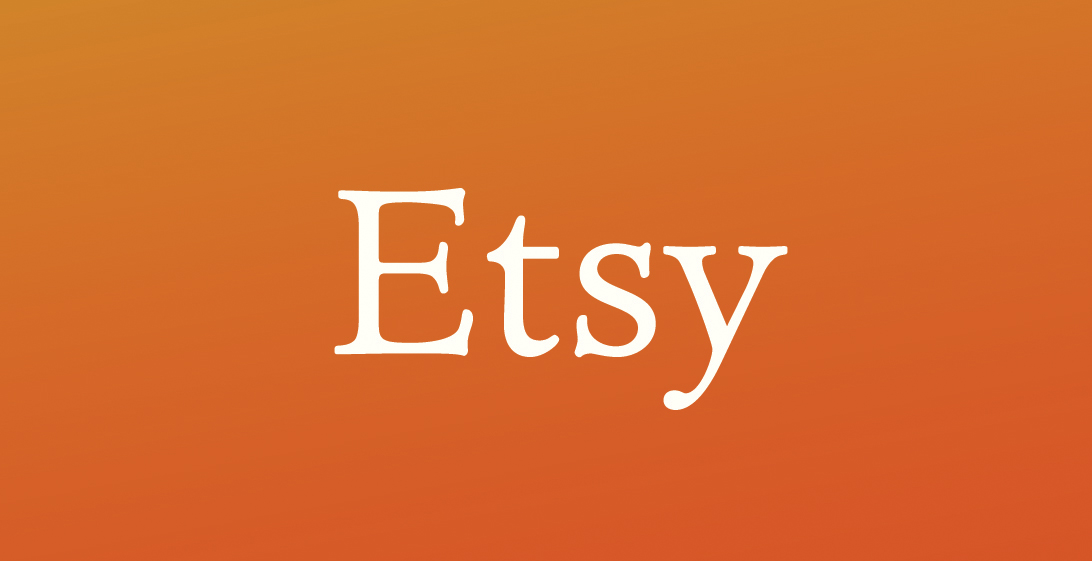Strategically tell your story and sell products

Kate Ahl, founder of www.simplepin media.com, based in Portland, Oregon, started her company four years ago to help several of her blogging friends harness the power of Pinterest for their blog content. Ahl has since grown her business into a full-scale marketing agency.
“It’s all about developing a smart keyword and image-based strategy that hooks the pinner in and encourages them to click over to your website,” Ahl says on her own website.
One of Ahl’s podcasts, “New to Pinterest,” gives step-by-step instructions on how to get started. I found her podcasts on Stitcher, but you can also tune-in on iTunes and Spotify. “Pinterest is not a social media site like Facebook or Instagram — it’s a search and discovery platform,” she explains. “It’s where people go to curate ideas.”
To start, Ahl suggests that you incorporate your business or brand name into your profile URL and stick to something under 14 characters. She also recommends then switching over a business account at business.pinterest.com, where you will get a code to put into your header. She says the benefit to converting to a business account means you can get Pinterest analytics and create ads when you are ready.
After completing your profile, you need to design 8-10 boards that focus around topics that are related to the type of content you wish to share. The purpose is to target the type of audience you want to attract. Ahl says to market on Pinterest, you need to incorporate “evergreen” content, which is relevant over a long period of time and is not quickly outdated — not just products you are trying to sell. Good evergreen topics could center around “Five Ways to Decorate for Fall,” or “Style a Scarf 10 Ways,” as a few examples.

Create stand-out images
When prepping images, it’s critical to know what size images Pinterest prefers — tall vertical photos with a 2:3 aspect ratio, or 600 x 900. In Episode 60, Ahl and Chaitra, from Pink Pot Studio, www.itspinkpot.com, instructs how to take professional-quality Pinterest-friendly photos with an iPhone. “If you have the right techniques — it’s not the tools — it’s the techniques that matter,” says Chaitra. “If you don’t have a photo that’s going to stand out amongst that big sea of pictures, then how are you going to stand out and get noticed?” she questions. “It’s really important to have high-quality, stand-out photos on Pinterest.”
Chaitra says lighting is the first consideration to make, and natural light is best. Find a large window and set up your scene next to it, to get the best natural light while indoors. If it’s a cloudy day, use a reflector, which is a surface that bounces light back to your scene. Even an inexpensive piece of white foam board will work as a reflector. Position the reflector opposite to the direction of the light. To keep your shot in focus, use a tripod. Even a slight shake of your hand can result in blurry shots.
Styling your photos is critical to achieving top-notch photos. Study other Pinterest photos that attract you and analyze how you can adapt that look to suit your brand’s style. Is your vibe minimalistic, rustic, dramatic, eclectic, or bright and cheery? Keeping your “look” consistent will encourage brand recognition as you grow your brand. Ahl says mastering your look won’t happen overnight: “There is a lot of trial-and-error involved.”
On her website, Chaitra says when getting ready to take your shot, imagine your photo as a nine-square grid, like a tic-tac-toe board. Position your main subject where the grid lines would intersect. On an iPhone, you can easily turn a grid on in your camera settings to guide you.
When taking pictures with an iPhone, Chaitra says not to zoom in on subjects, because iPhone doesn’t use optical zoom — it employs digital zoom. When you zoom in with your iPhone camera, essentially you are just cropping out the edges and reducing the resolution and image quality. What she does recommend, is “zoom” by using your feet; physically get closer to your subject before taking the shot.
For editing, Chaitra recommends using Snapseed. With this free app, you can easily edit the exposure, contrast, and saturation as well as crop, fix blemishes, add targeted lens blur, and more.
Handmade expert experience
Ahl says there are many ways to use Pinterest to market and sell their products. In her podcast episode number 64, Ahl introduces listeners to Liz Lamoreux from Soul Mantras. Lamoreux makes and sells her line of handmade jewelry from her studio in Tacoma, Washington.
Lamoreux got her handmade business start working from home and running an Etsy shop when her daughter was an infant; she also authored a book, “Inner Excavation,” which shows readers how to explore creativity through photography, poetry, and mixed-media art. “The real core of my business is helping people feel less alone in the world,” says Lamoreux, “whether it’s through the writing I do or through my jewelry.”
Her jewelry business grew through word-of-mouth and blogging. “I had a good little ‘side thing’ going,” she laughs. Lamoreux opened her Etsy shop in 2007 and remembers her first sale, which she likened the excitement to an actress winning an Academy Award. “I was having periods of growth before we were really using social media to share what we were doing,” she recalls.
Lamoreux says she was an early Pinterest user, when the social media platform was still an invitation-only platform: “I used it instead of using bookmarks for everything. I didn’t really know what to do with it. I felt like I was sitting on a goldmine and didn’t have the tools, and a bit like I was standing on my front porch and forgot to put my robe on.” Today, Lamoreux has over four million Pinterest followers with 3.1 million monthly viewers. Lamoreux says the most important things that entrepreneurs can ask themselves is, “What story am I selling and who is my audience?”

Using Pinterest to sell products
“Pinterest is like driving down a highway with billboards on the side, and people are going that fast, like if they are on a phone,” Lamoreux says. “You have to catch their attention.”
She says entrepreneurs should also consider what type of pin they are creating; some examples could be those that teach, inspire, tell a story, or products with an “X” factor. Ahl agrees: “I think as business users we get so caught up in ‘what’s the algorithm,’ or ‘how do I pin or manual pin,’ and so many forget to focus on that image piece that answers, ‘what’s the story you’re telling?’”
Ahl advises, “If you are taking pictures of your products, try and make one or two of them super clean to where there’s not a lot in the background and Pinterest can really home in on the actual product.”
Lamoreux has various pinning strategies and admits to using Pinterest for both personal and business purposes under the same profile. Under her profile, followers can find boards, for example, that focus on the color blue or coffee, which shows a personal, human side of herself. Her top boards focus more on her business and brand. She pins her products, but also those belonging to others that she likes, and she feels her audience would enjoy too.
When developing image ideas, beyond the basic, clean product shots, Lamoreux also focuses on those that show followers how to use or wear her products, also known as lifestyle shots. She then links them to various locations online, such as her website, blog, or e-commerce shop, creating a multi-faceted pinning strategy. “Keep sharing what you love about your business,” she advises.
Lamoreux suggests that entrepreneurs should “get curious” and seek alternative ways to market their products at various times of the year. For example, at back-to-school time, she might pin a bracelet for moms that says, “you got this.”
“Mom’s need to be reminded that they are going to be OK when their kids head off to kindergarten or high school. It’s all about thinking outside the box,” says Lamoreux.
Write effective keywords
Ahl advises that developing the right keywords ensures that “the right people find your content.” You can add targeted keywords right by your business or personal name in your profile, in your profile description, in board titles and descriptions, and down to each item you pin in its description.
For each pin, upload your image, add the URL to the post where you want the user to go when they click on your pin — your website, blog, store, etc., and make sure your description is keyword-rich. To help you identify keywords to use, in the Pinterest search bar, start typing in a word, such as “handcrafted.” You will notice other suggestions that pop up, like “handcrafted jewelry, handcrafted gifts, handcrafted furniture,” and more.
Since I craft items from vintage canning jars, I tried this out myself by typing in “Mason jar,” and what prompts came up were “Mason jar centerpieces.” I then typed in “Mason jar centerpieces” and new prompts came up: “Mason jar centerpieces weddings, Mason jar centerpieces Christmas, and Mason jar centerpieces rustic.” You get the idea.
This tells me that these are the terms people are searching for when looking for similar items. If I incorporate these terms into my relevant products, it will make it easier for people to find my pins, and therefore, discover my brand and products.
Featured Experts
Kate Ahl
Pinterest: Simple Pin Media
Instagram: @simplepinmedia
Facebook: @simplepinmedia
Twitter: @simplepinmedia
Liz Lamoreux
Etsy: @lizlamoreux
Pinterest: Liz Lamoreux
Instagram: @soulmantras
Top 10 Pinterest Tips
- Level Up — convert to a Pinterest business profile; this gives you great tools and you don’t lose data or your pins.
- Have a “Pin-It” button in place and make sure it works. Encourage people to pin items. Squarespace and WordPress has them
- Get “rich” pins on your site, which puts the most relevant information in front of the user/sharer
- Make sure your pins are optimized for Pinterest, if you aren’t using Rich Pins.
- Schedule your pins; consistency is key
- Offer value to your content by also curating boards with other’s people’s items and inspiration that moves you
- Look at the big picture when evaluating your metrics and stats; don’t focus on single-day or short-term results
- Establish realistic growth expectations; 2-5 percent per month is good
- Track traffic to your website and sales
- Stay connected with other people so you keep learning

Using Keywords to Write Descriptions
Keyword: Mason jar buffalo
Prompts: Mason jar buffalo plaid
Keyword: Mason jar soap
Prompts: Mason jar soap dispenser, Mason jar soap dispenser rustic, Mason jar soap dispenser painted, Mason jar soap pump
Sample Pin and Description:
Buffalo Plaid Mason Jar Soap Pump:
Hand painted in a sweet, rustic buffalo plaid pattern, these upcycled Mason jars are transformed into trendy, functional soap dispensers …






